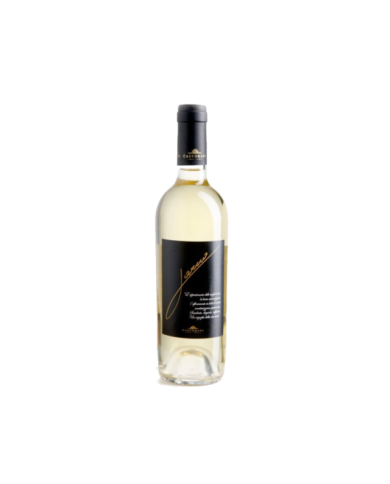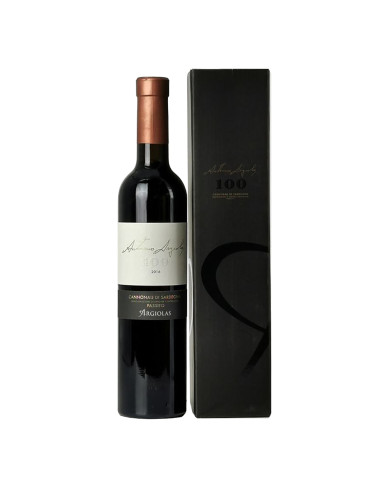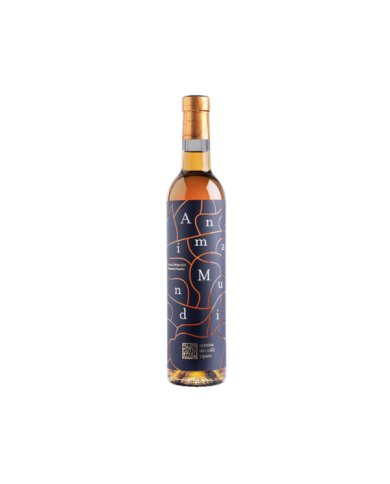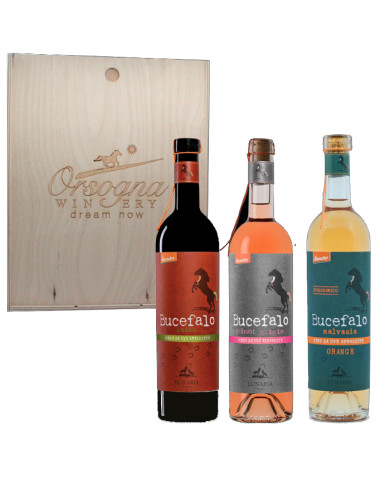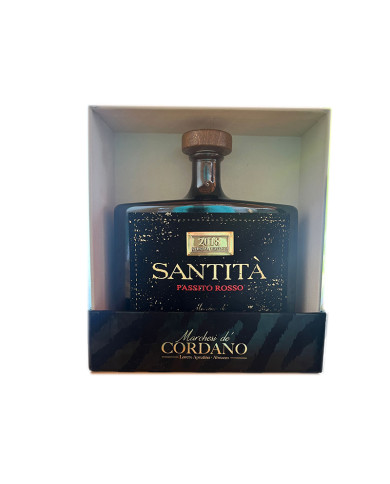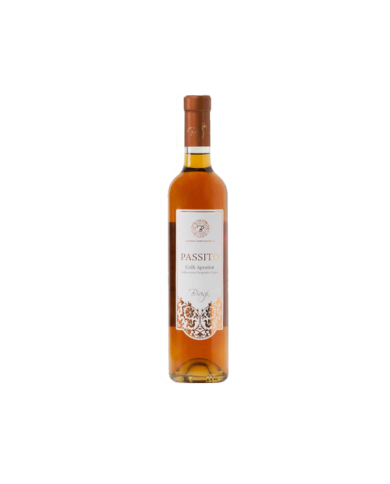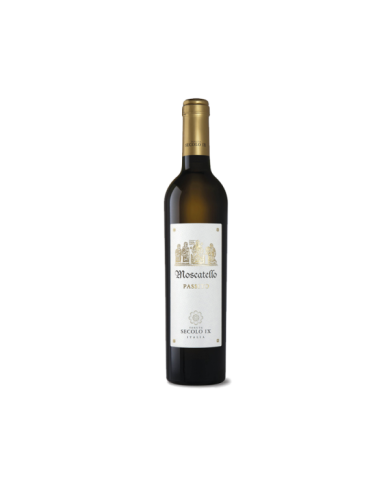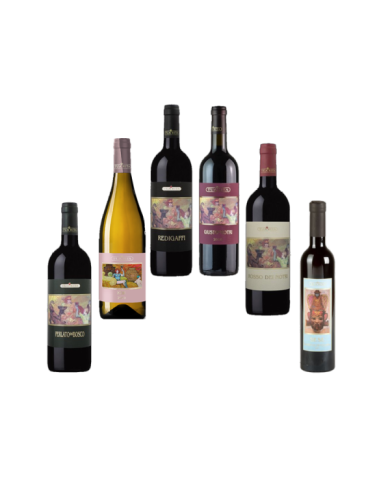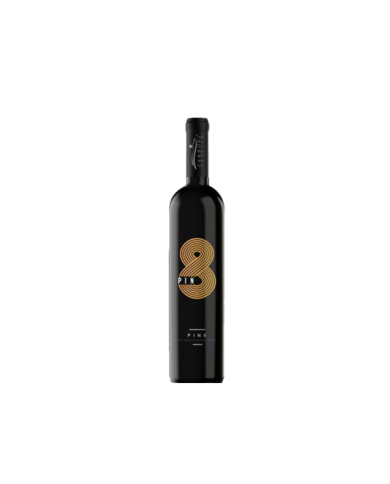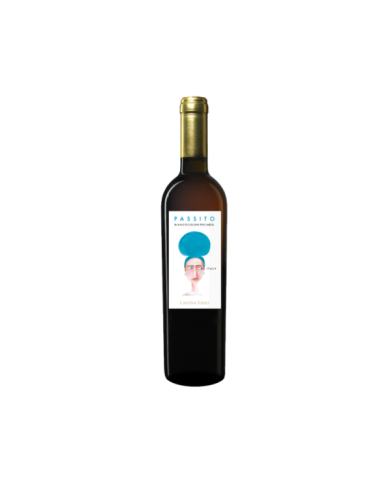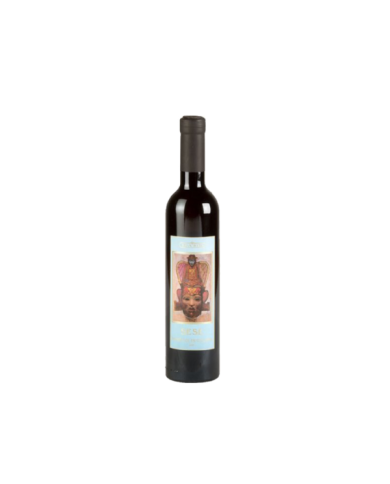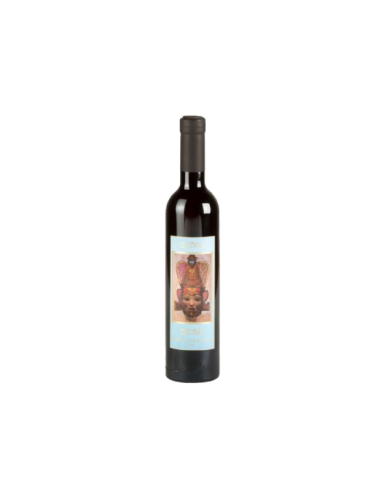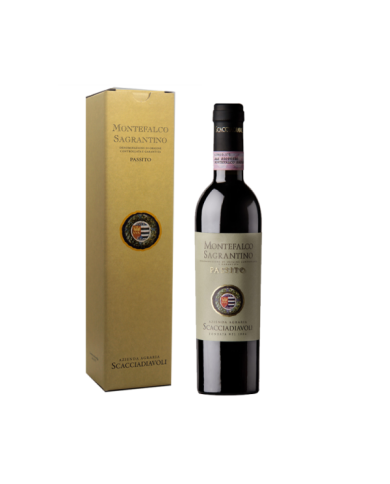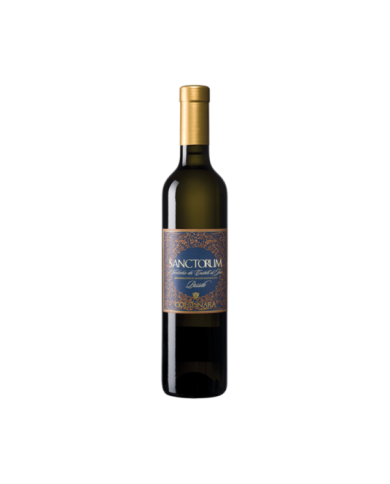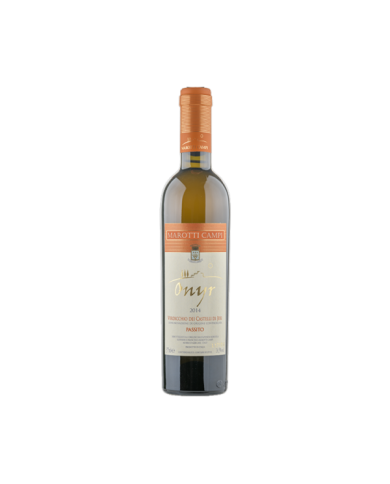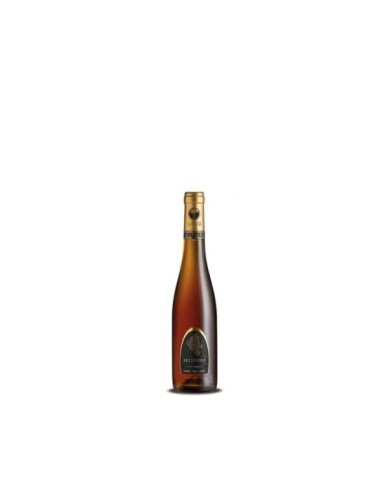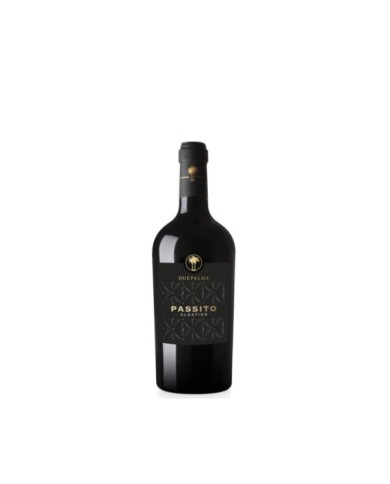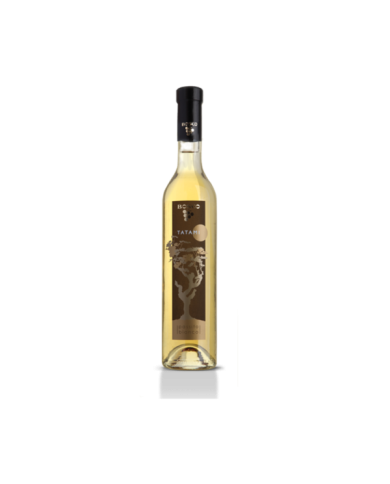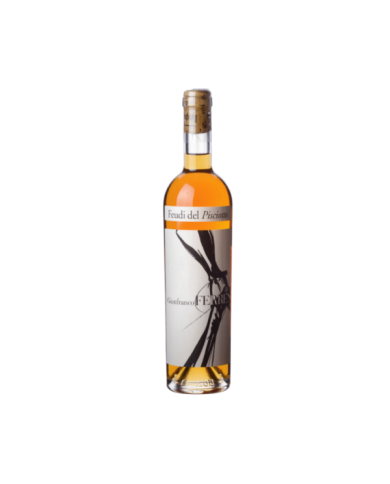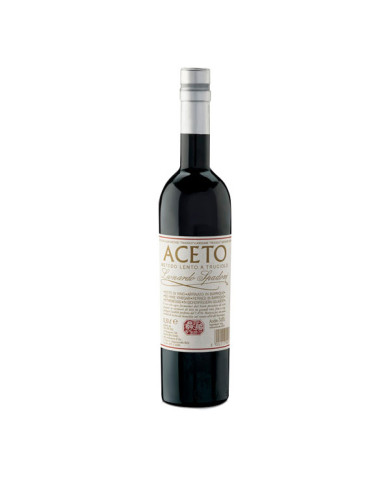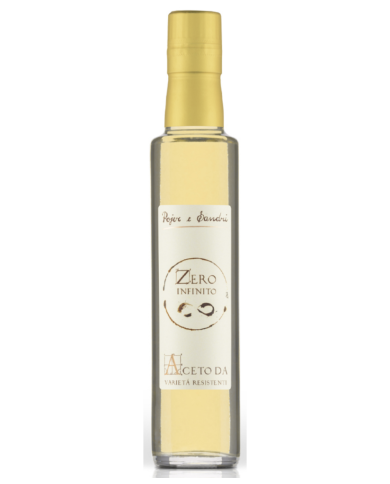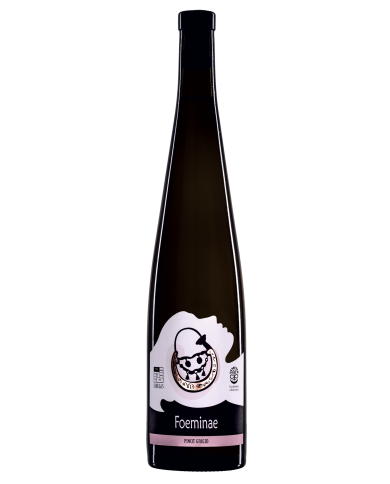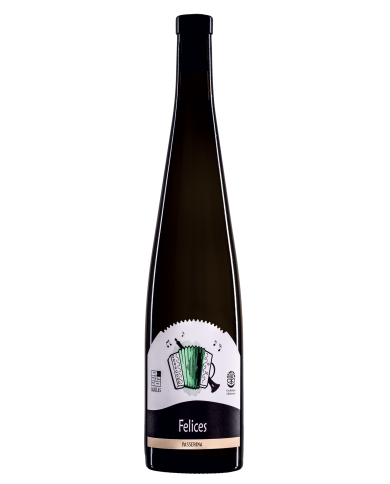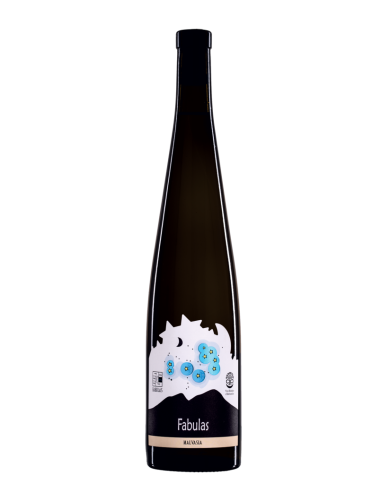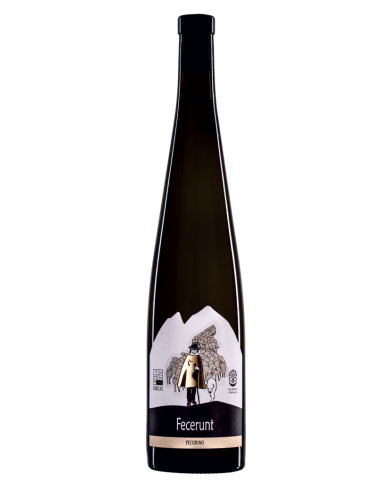With an intense ruby red color, it is a velvety wine, which contains hints of cherry, raspberry and dried fig. On the palate it reveals slight notes of violet that pamper and caress the end of the meal. Maximum Expression: 8-10 years. Vinification: On the skins for 18 days, followed by static decanting in large barrels. The wine is aged for 9 months in barriques and then rests for 6 months in the bottle.
Excellent with desserts at the end of a meal, it finds its most original combination with great aged or blue cheeses. Full and enveloping body, with an intense sugary sensation but well balanced by the natural final acidity, rich in fruity aftertaste nuances. The grapes are harvested overripe, put in large perforated crates (binz) and stored in a cold room for 45 days until the natural drying process is completed. When harvested, the best bunches are sorted and brought to the cellar, pressed and softly pressed.
A passito with a long tradition, but with a style made modern through the mass selection of the most aromatic and acidic Moscatelli and a winemaking process that aims to enhance the fresh primary aromas.
Pinotto is the sweet red of the Carboni winery: an IGT Isola dei Nuraghi Rosso Passito , obtained from an atypical vine for Sardinia, typical of central Italy with an aromatic character , which some winegrowers have started a few years to plant in certain areas of the Mandrolisai. It is a wine produced in very small quantities , only in the years deemed most suitable.
From one of the oldest vines in the world, Moscato Bianco, our Passito di Noto is born. Passito is an ancient wine that becomes current with a modern drying system. Explosive aromas of exotic fruit, jasmine, candied citrus, it is both complex and easy to love. The ideal companion of the great Sicilian tradition of sweets and ice cream.
Obtained from the Montepulciano grape, left to dry for months after the harvest, then vinified with a natural process. A sweet wine to never forget.
Passito bianco di Tollo is produced with Moscatello grapes (Moscato Bianco) from 15-20 year old vines grown on the Pescara hills. The nose has aromas of flowers, jam, ripe fruit with white pulp. In the mouth it is intense, rich in aromas and hints of ripe fruit and raisins. An excellent end of a meal.
In Pantelleria, a volcanic island located between Sicily and Africa, Stefano and Simona boasts 2 hectares of vineyards and produce only 2000 bottles a year. The vine is the zibibbo, prince among the aromatic varieties, the vines are grown on a very low bush, modeled by the wind, on small terraces bordered by dry lava stone walls.
In Pantelleria, a volcanic island located between Sicily and Africa, Stefano and Simona boasts 2 hectares of vineyards and produce only 2000 bottles a year. The vine is the zibibbo, prince among the aromatic varieties, the vines are grown on a very low bush, modeled by the wind, on small terraces bordered by dry lava stone walls.
Dedicated to Donna Plautilla A. ancestor of our family who lived in the second half of the eighteenth century (1759-1809) and dedicated to all the women of Montefalco, the true guardians of the Sagrantino Passito tradition. The women were entrusted with the task of detaching the Sagrantino grapes from the stalks, the ŌĆ£sbacaturaŌĆØ for the subsequent vinification and it was a job that was done by the fire after dinner, in the cold evenings of late autumn. Images of true poetry for a wine that is itself poetry. The harvest of Sagrantino destined for drying takes place in the first days of October and is very meticulous. The clusters are treated with extreme care because they absolutely must not break, they are placed in small boxes whose bottom is covered with a layer of vine leaves (vine leaves). Only suitable bunches are harvested, those with the most sparse berries that can better withstand the long drying period on the ŌĆ£CamorcanneŌĆØ, racks where the bunches are placed side by side, without overlapping. The drying can last even more than two months, depending on the weather conditions. Once the right sugar content is reached, the vinification is the same as for other wines: temperature control, frequent pumping over, racking, soft pressing and racking. The final wine yield is very low, only 35% of the initial quantity of grapes. Unlike the Rosso and the dry Sagrantino it does not age in wood, but in steel barrels for a period of thirty-six months. Then follows the refinement in the bottle. The bottles produced are all numbered by hand.
Obtained thanks to the drying process of Sagrantino grapes.
Very ample wine, with a great structure with a long aromatic persistence and a typical tannic finish supported by a pleasant sweetness.
Wine with great evolutionary capacities in the bottle. In fact, it can be refined in the bottle for many years, significantly improving.
This sweet wine has a unique style. The red color is impenetrable, the scent evokes blackberries, dried fruit and cinnamon, the taste is of a singular balance. In fact, the dense texture of tannins imprisons acidity and sweetness and everything is confused, creating a gustatory sensation of harmonious fullness. It is thanks to the drying of Sagrantino grapes on racks that such a concentration is obtained. Originally Sagrantino grapes were used only for the making of this sweet wine, drunk on the occasion of religious ceremonies in the villages of the area.
Intense ruby red and full to the eye. The nose firstly gives deep notes of dark fruit, such as blackberries, sour cherries and black cherries, overripe and jam, then followed by references to eucalyptus, tamarind, cinnamon, myrtle and cocoa. The palate is all played between sweetness and tannins, to prove balanced, full-bodied and with a long persistence. Perfect with chocolate and excellent with fruit tarts, it is also ideal sipped alone as a meditation wine.
The Donnafugata Sweet Pochette is an innovative packaging that reproduces a cardboard handbag, perfect for storing and carrying two bottles. The refined accessory contains a prestigious Ben Ry├® Passito and Kabir Moscato di Pantelleria Doc. A gift idea with a look at the female world.
Bright amber yellow, the nose expresses a wonderful olfactory profile composed of notes of apricot and peach, dried figs and honey, aromatic herbs and mineral notes. Intense and bewitching aromas, solar and Mediterranean, which open to an immense taste for complexity, perfect in the fusion of sweetness, flavor and softness. Very long, interminable, poignant. Strictly at the end of a meal, ŌĆ£Ben Ry├®ŌĆØ is a perfect accompaniment to blue or very aged cheeses and foie gras. Also excellent on ricotta desserts and dry pastries.
A passito that contains the essence of Verdicchio, what is most holy in the saint: for this reason the derivation of the name from the expression Santa Sanctorum. The Passito Wine is the result of the processing of dried grapes in the vineyard, which retain only the pure soul of the Verdicchio grape, and which then ferment slowly in small oak barrels.
Golden yellow tending towards amber. On the nose yellow flowers, candied fruit, peaches in syrup and pine nuts. Soft on the palate, tending to sweet, allowing apricots and baked pears, notes of vanilla and a slightly almond finish. Serve at 14 ┬░ with dry sweets, almond paste, cheeses or cheesecakes, foi gras or alone as a meditation wine. Alcohol: 14.5% vol.
Intense golden yellow with amber reflections. The nose reveals elegant aromas of ripe fruit, candied orange and a note of acacia honey. In the mouth it is sweet, enveloping, pleasantly characterized by balsamic traces of spices before a finish of great persistence. At the end of the meal, it is enhanced with small cream-based pastries but also with pies and biscuits.
Orange red color. The nose is expressed with hints of jam, notes of honey and hints of toasting. On the palate it is warm, full-bodied, soft and pleasantly refined. Ideal for cheering after dinner, it goes well with red fruit tarts.
Color : intense golden yellow. Nose : floral aromas and notes of dried fruit. Taste: sweet, warm and enveloping. Serving temperature: 10 ┬░ C. Pairings: medium-aged cheeses, desserts. AWARDS: 4 Grappoli, Bibenda 2014 - Best debut, Gold guide Veronelli wines 2014
One of the best Italian sweet wines Label designed by Gianfranco Ferr├©. Aromatic notes and perfect acidity stand out. A product characterized by balanced flavors, with perfect sweetness and offering clear hints of dried fruit, honey and rose.


